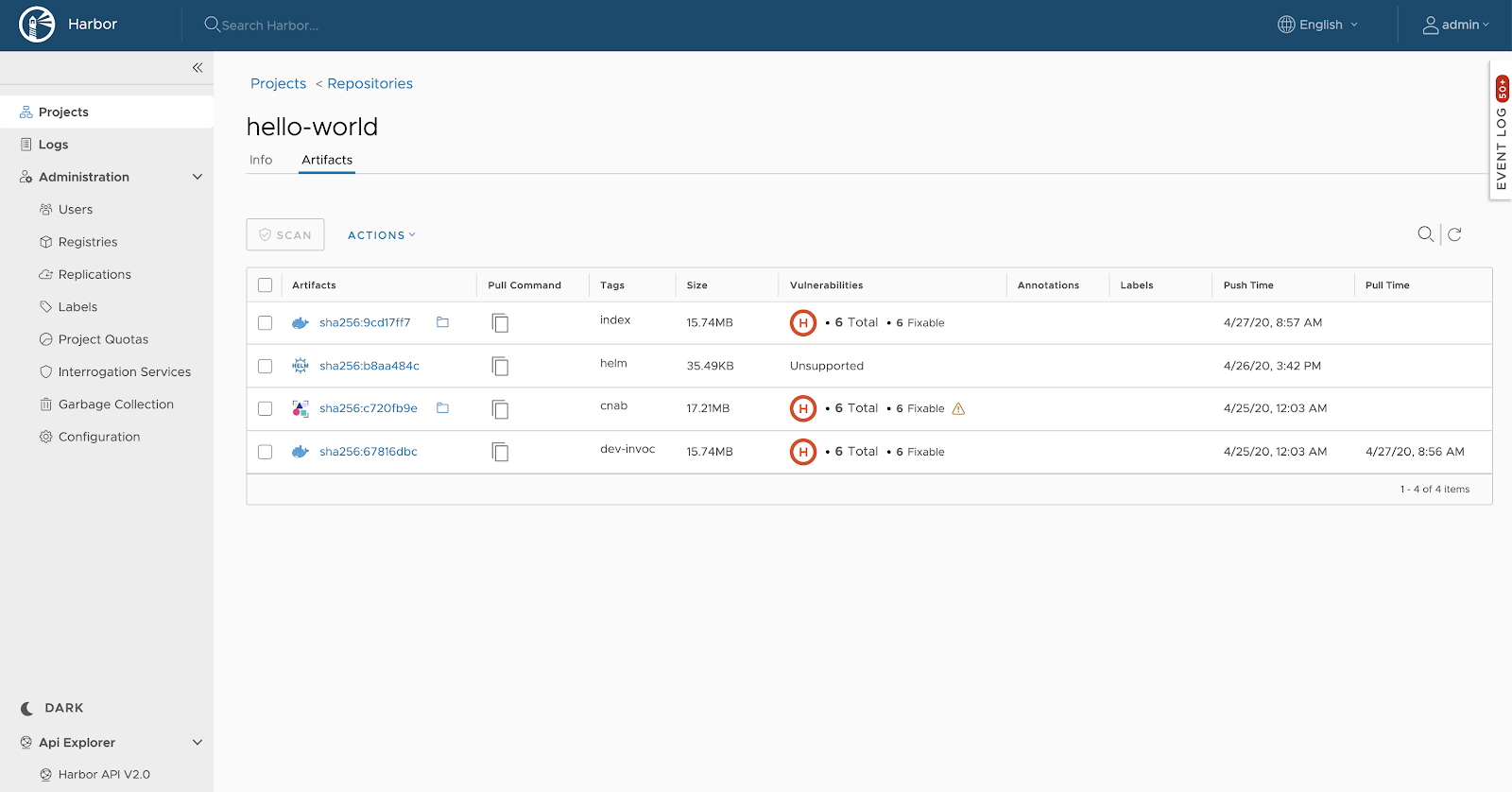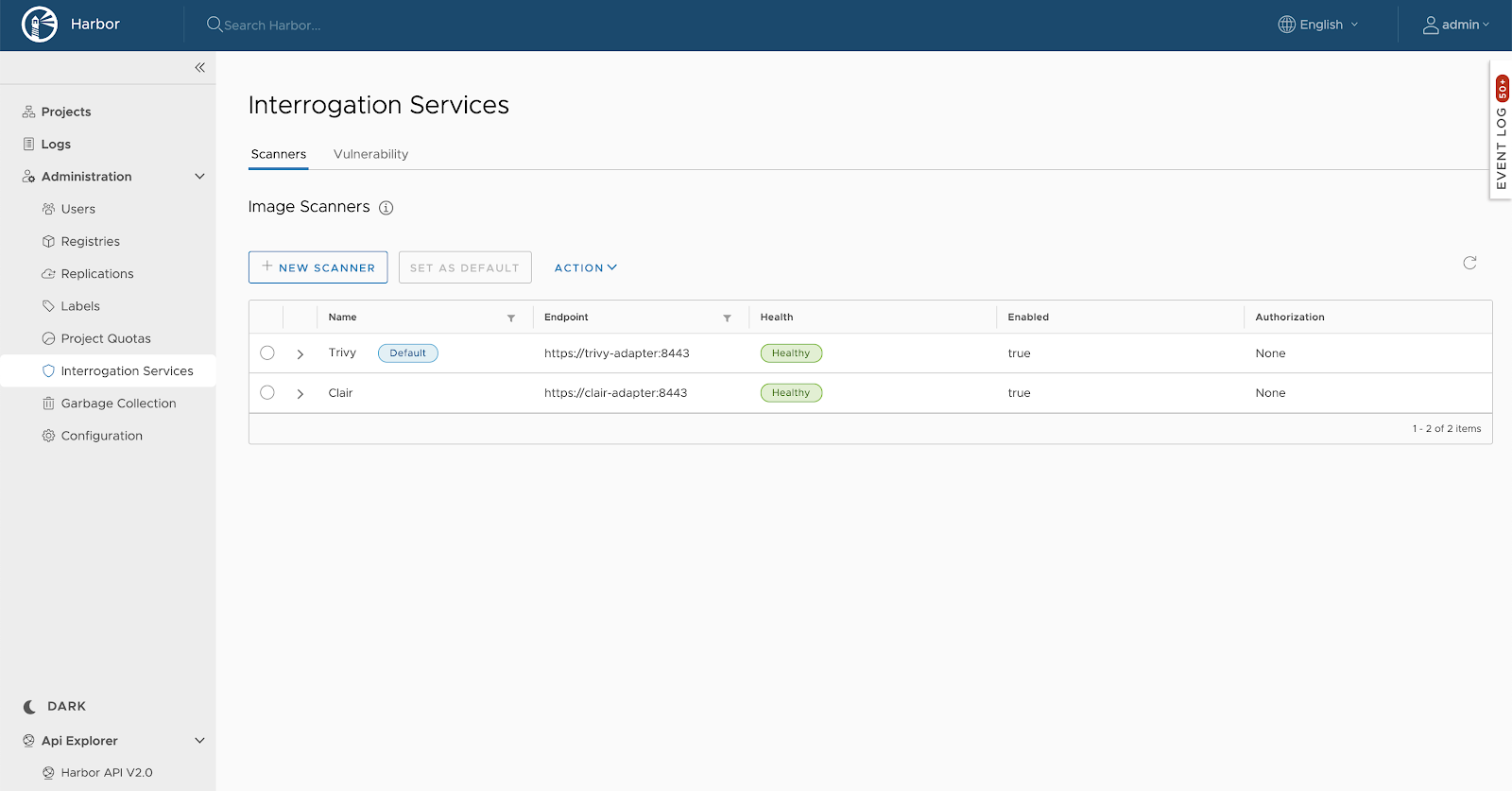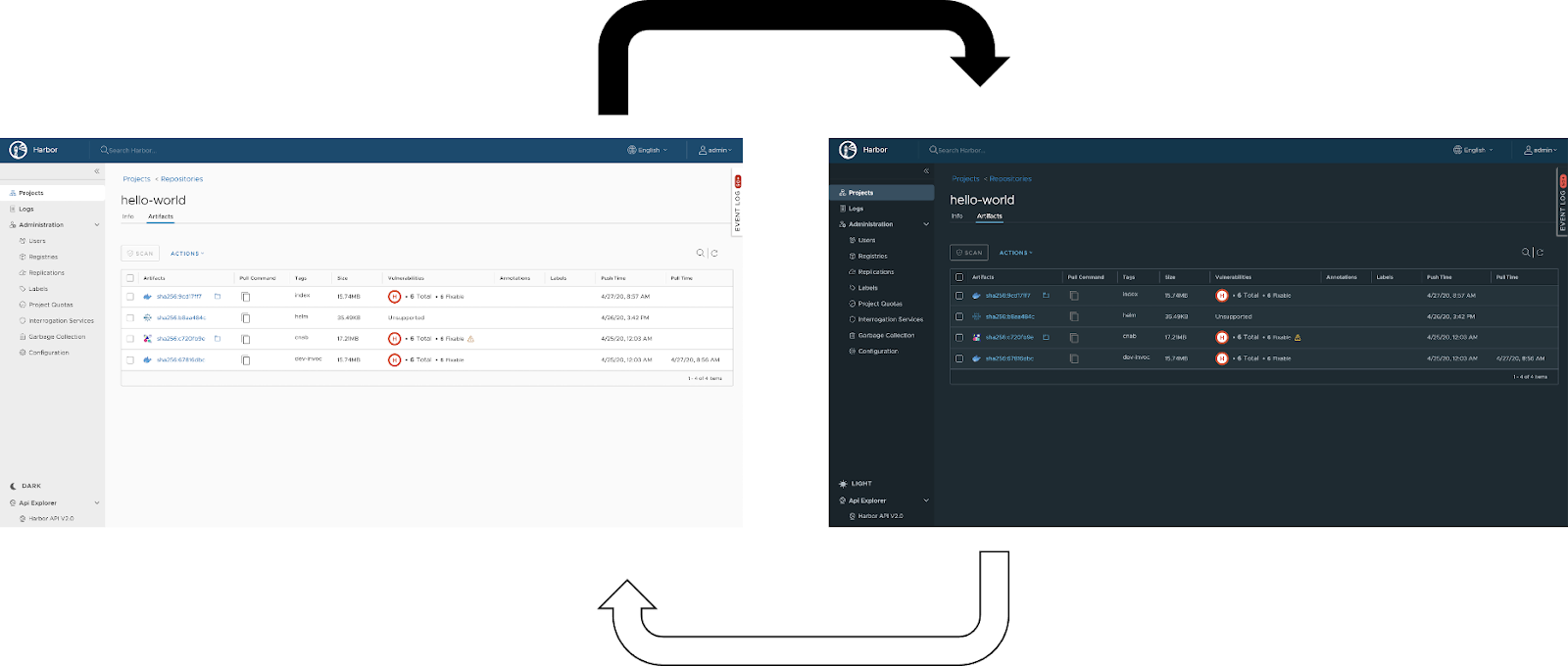Recent articles
Project Harbor Shines at KubeCon NA 2024 in Salt Lake City but what about London?
Harbor v2.11 release - The SBOMs release
Bonjour Harbor KubeCon + CloudNativeCon Europe 2024 - Paris
Harbor v2.10 release
Harbor 2.0 takes a giant leap in expanding supported artifacts with OCI support
Making Harbor the first OCI-compliant open source registry
May 13, 2020
Harbor Team
We are pleased to announce general availability of Harbor 2.0. This release makes Harbor the first OCI ( Open Container Initiative)-compliant open source registry capable of storing a multitude of cloud-native artifacts like container images, Helm charts, OPAs, Singularity, and much more.
If you’re interested in learning more about Harbor 2.0, register today for the CNCF Project Webinar on Harbor on May 28, 2020 at 10:00am PDT.
Let’s first dive into what OCI is and what the release of Harbor 2.0 means for the community.
OCI is a tried-and-true industry standard that defines specifications around format, runtime, and the distribution of cloud-native artifacts. Most users are familiar with some of the more popular OCI-compliant artifacts, like docker images and Helm charts. The OCI specification helps bring artifact authors and registry vendors together behind a common standard. As a developer, I can now adopt the OCI standard for my artifacts and be confident that I can use an OCI-compliant registry like Harbor with minimal to no changes.
At a high level, OCI puts forth two specifications: an image specification and a runtime specification. The image specification defines what the image looks like, including the archival format and the contents, including the manifest, the (optional) image index, the ordinal set of filesystem layers, and a configuration file. The OCI runtime then takes that configuration and converts it into an executable that consumes the filesystem bundle in accordance with the runtime specification. Put another way, the image specification facilitates the creation of interoperable tools for building, transporting, and preparing images for running whereas the runtime specification dictates the configuration, execution environment, and lifecycle of a container.
Supporting OCI-compliant images in Harbor means supporting its set of APIs and interpreting key information. Such information includes the OCI schemas and media types that are used to determine what can or cannot be pushed onto Harbor. For example, the manifest.config.mediaType field is critical for identifying itself to the registry while the layer.mediaType defines the filesystem layers that are to be stored and persisted on the registry—without the registry having to pull and dissect the layers first.
For example, Helm charts can now be pushed onto Harbor via Helm3. Instead of being hosted separately in ChartMuseum, Helm charts are now stored under artifacts alongside container images. In this figure below, we see a container image, a Helm chart, and a Cloud Native Application Bundles (CNAB) hosted in the same project.

Harbor gets another key benefit from being OCI-compliant: It is now fully capable of handling an OCI index, a higher-level manifest representing a bundling of image manifests that’s ideal for multi-architecture scenarios. Imagine pulling an image without having to specify the operating system and platform and instead relying entirely on the client tooling to ensure the correct version of that image is fetched. This index structure is widely leveraged by artifacts like CNAB for managing distributed cloud-agnostic applications.
Although Harbor is now OCI-compliant, existing users should not worry; all of the familiar operations and key benefits of Harbor translate well to OCI. You can push, pull, delete, retag, copy, scan, and sign indexes just like you’ve been able to do with images. Vulnerability scanning and project policies, key ingredients to enforcing security and compliance, have been revamped to work with OCI artifacts. We also provided a new, key capability: you now have the ability to delete an image tag without deleting the underlying manifest and all other associated image tags. You can also view untagged images, and have the option to exclude them from being garbage-collected.
As artifact types will undoubtedly come and go, it’s crucial that Harbor exists outside of any particular container format, and be flexible enough to onboard and discard any artifact type based on community demand and adherence to common standards.
This release also replaces Clair with Aqua’s Trivy as the default image scanner. Trivy takes container image scanning to higher levels of usability and performance than ever before. Since adding support for Trivy through our pluggable scanning framework in Harbor v1.10, we have received great feedback and have seen increasing traction among the Harbor community, making Trivy the perfect complement to Harbor. Trivy has wide coverage for scanning different operating systems and application package managers, and is easy to integrate into CI/CD systems. It also conducts deep scans and picks up vulnerabilities across popular distros like CentOS, Photon OS, Debian, and Ubuntu, among others. Clair also continues to be supported in Harbor as a built-in scanner. In fact, during an upgrade to Harbor v2.0, projects using Clair as the scanner of choice will be unaffected; Trivy will be set as the default scanner only for new installations.

We listened to user feedback and are making strides towards an improved design for Harbor robot accounts, a design that reflects common usage patterns. Harbor v2.0 introduces the ability to set an expiration date on each individual robot account as opposed to a system-wide setting. In a future release, we will grant robot accounts the ability to be targeted to one or more projects, and will offer better credential handling for Kubernetes deployments.
Also new in Harbor v2.0 is the ability to configure SSL for core Harbor services. When configured, internal Harbor services will encrypt their service-to-service communication. This feature enhances the security posture of Harbor and reduces the likelihood of man-in-the-middle attacks.
Webhooks can now be individually triggered, and come with Slack integration. Some users may not want to receive callbacks for every supported webhook action, so this update enables users to configure, at the project level, which webhooks to receive and the preferred callback method, HTTP or Slack.

Did you also notice the all-new dark mode in the updated Harbor UI? Download Harbor v2.0 and give it a shot!
Hopefully Harbor v2.0 has your attention. Join us for the CNCF Project Webinar on Harbor v2.0 on May 28, 2020 at 10:00am PDT by registering here.
Harbor is an open source, trusted cloud native registry project that stores, signs, and scans container images, Helm charts, and any other OCI-compliant artifacts. Harbor extends the open-source Distribution/Distribution by adding key enterprise-level features in authentication and access control (LDAP and AD as well as OIDC support for RBAC), two-way replication to and from other third-party registries, advanced garbage collection, and authenticity and provenance capabilities through third-party image scanning and signing solutions. Harbor, which supports Docker Compose and Kubernetes, deploys in under 30 minutes. Harbor can be fully managed through a single web console and comes with a rich set of APIs managed with Swagger.
Get updates on Twitter ( @project_harbor)
Chat with us on Slack ( #harbor and #harbor-dev on the CNCF Slack)
Collaborate with us on GitHub: github.com/goharbor/harbor
Attend the community meetings: https://github.com/goharbor/community/wiki/Harbor-Community-Meetings
Alex Xu Harbor Contributor Senior Product Manager, VMware @xaleeks